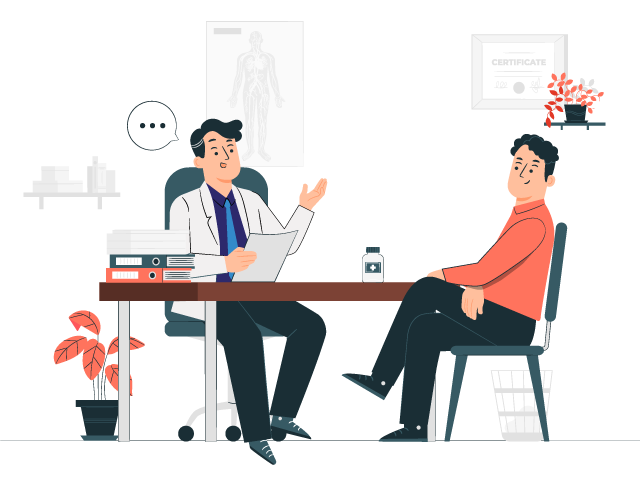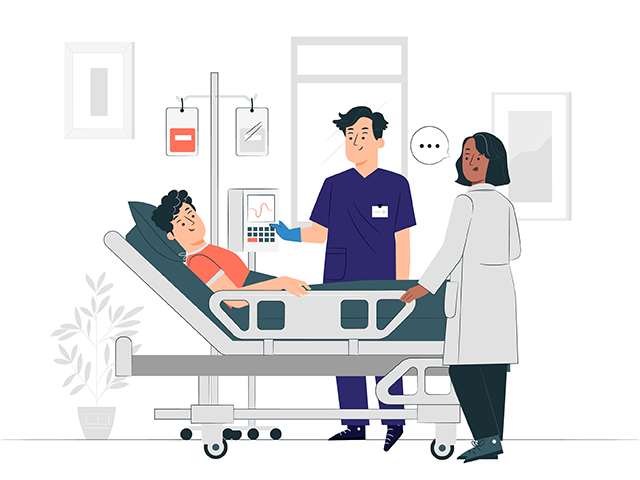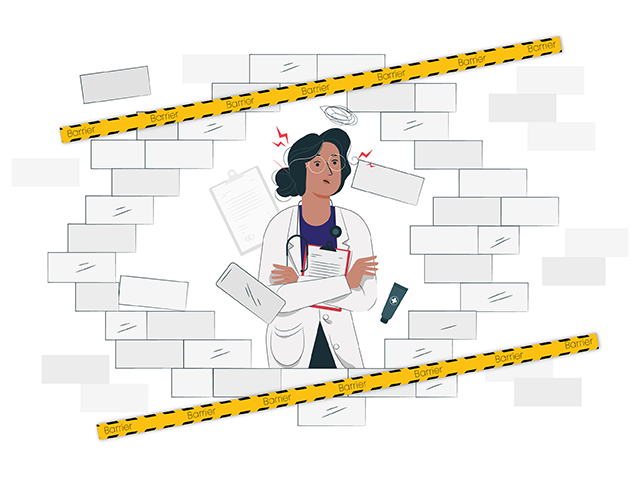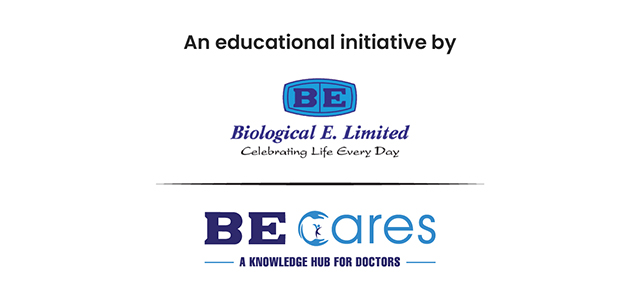Medicine is an art whose magic and creative ability have long been recognized as residing in the interpersonal aspects of the patient-physician relationship.
A doctor’s communication and interpersonal skills comprise their ability to gather information to aid in accurate diagnosis, appropriate counseling, giving therapeutic instructions, and establishing a caring relationship with patients. These are the prime clinical skills in the practice of medicine, with the goal of achieving the best results and patient satisfaction, which is essential for the effective delivery of healthcare.1

Introduction
Objective of doctor-patient communication
The main objective of any doctor-patient communication is to enhance the
patient’s health and medical care. Studies on doctor-patient communication have
shown patient dissatisfaction even when many doctors considered their
communication adequate or even excellent. Doctors tend to overestimate their
communication skills.1
Tongue et al. reported that 75% of the orthopedic surgeons surveyed believed
that they communicated sufficiently with their patients, but only 21% of the
patients reported satisfactory communication with their doctors. Patient
surveys have consistently demonstrated that they want better communication with
their healthcare providers.1
The principles of patient-centric medicine go back to the ancient Greek
school of Cos. Yet, patient-centered medicine has not been a common clinical
practice. For instance, in the 1950s and 1970s, majority of the doctors
considered it inhumane and detrimental for patients to reveal bad news due to
the bleak treatment prospect for cancers.1
The medical model has recently evolved from paternalism to individualism.
Information exchange is the leading communication model, and the health
consumer movement has led to the current model of shared decision-making and
patient-centered communication.1
Benefits of effective communication
Effective doctor-patient communication is the key clinical function, and the
consequent communication is the heart and art of medicine and the prime
component of healthcare delivery. The three major goals of current
doctor-patient communication are:1

Effective doctor-patient communication is determined by the
doctor’s “bedside manner” which patients judge as a major sign of their
doctors’ general competence.1

Good doctor-patient communication can help regulate patients’ emotions, aids
in the comprehension of medical information, and allow for improved
identification of patients’ needs, perceptions, and expectations. Patients who
report good communication with their doctors are more likely to be satisfied
with the treatment, and especially to share relevant information for accurate
diagnosis, follow the advice and adhere to the prescribed treatment. Patients’
recovery is strongly associated with their agreement with the doctor about the
course of treatment and the need for follow-up.1
A more patient-centered practice results in a better patient as well as
doctor satisfaction. Satisfied patients are less likely to file formal
complaints or initiate malpractice complaints. Satisfied patients are
beneficial to doctors in terms of greater job satisfaction, lower work-related
stress, and reduced burnout.1
Patient Satisfaction is improved by better recognition and understanding of
their problems and the treatment available. This also has a positive impact on
patients’ psychology, mental health, tolerance power, and quality of life.2
Components of Communication
The three basic components of effective communication are:2

Verbal components comprise the content of the message including the
selection of words. The non-verbal component includes body language such as posture,
gesture, facial expression, and spatial distance. Paraverbal component includes
tone, pitch, pacing, and volume of the voice. While communicating, doctors
mostly focus on the verbal component which constitutes only 10% of the message
delivered. The non-verbal and para-verbal components contribute 90% of the
total message delivered.2
The verbal content is crucial and includes information about the nature,
course, and prognosis of the disease, available treatment options, nature,
cost, the yield of investigations, and risks/benefits of invasive procedures.
The non-verbal component of communication is frequently considered less
important, the literature suggests that it significantly affects important
outcomes like patient satisfaction, adherence to advice, and clinical outcome.2
Barriers to good communication

There are several barriers to good communication in doctor-patient
relationships such as patients’ anxiety and fear, doctors’ burden of work, fear
of litigation, fear of physical or verbal abuse, unrealistic patient
expectations, lack of knowledge, and language barrier.1,2 Lack
of insight due to inadequate knowledge and training in communication skills is
one of the most important barriers. Finally, other factors like stress,
tiredness, or lack of time majorly contribute to an overburdened setting.2
➢ Deterioration of communication skills with time
Communication skills tend to decline as medical students progress through their
medical education, and over time doctors may lose their focus on holistic patient
care. Additionally, the emotional and physical brutality of medical training
can suppress empathy, substitute techniques and procedures for talk, and may
even cause diversion of patients.1
➢ Nondisclosure of information
Serious miscommunication in doctor-patient interaction is a potential pitfall,
especially regarding patients’ understanding of their prognosis, purpose of
care, expectations, and involvement in treatment. These crucial factors may
impact patients’ choices regarding their treatment and end-of-life care that
may have a significant influence on the disease.1
➢ Avoidance behaviour
Doctors sometimes avoid discussion of the emotional and social impact of
patients’ problems as it may distress them when they could not control them.
Such situations can negatively affect doctors emotionally and increase
patients’ distress. This avoidance behaviour may lead to patients being
unwilling to disclose problems, which in turn could adversely impact their
recovery.1
➢ Discouragement of collaboration
Doctors have been found to discourage patients from expressing their concerns
and expectations as well as requests for more information. This negative effect
of the doctor’s behaviour and the resultant nature of the doctor-patient
communication discouraged patients from asserting their need for information
and explanations.1
➢ Resistance by patients
Nowadays patients are no longer passive recipients and can resist the power
that society offers doctors. They can totally resist the monologue of
information provided by actively reconstructing expert information to assert
their perspectives, knowledge, experiences, and social realities of their
lives.1
Strategies for improvement
➢ Communication skills2
o Patient listening
✓ Make the patient and attendant comfortable.
✓ Do not have discussions while walking in the
corridors.
✓ Show interest when the patient is talking with your
mannerism, body language, and active involvement.
✓ Mannerism like nodding may help in convincing the
patient that you care and have understood their problem.
✓ Do not interrupt them.
✓ Always ask if they would like to add something
before concluding.
o Before the formal medical interview with the patient
✓ Maintain confidentiality and privacy. Do not
consult your patient in presence of other people.
✓ Greet the patient and introduce yourself.
✓ Know your patient’s name.
✓ Establish eye contact with your patients.
✓ Make the patient comfortable with a general
non-medical inquiry.
o Conducting a medical interview with the patient
✓ Observe both verbal and non-verbal clues from the
patient.
✓ Provide prompt responses to patients’ queries.
✓ Discuss the nature, course, and prognosis of the
disease, treatment options available, and requirements of the investigations.
✓ Involve the patient in the decision-making process.
✓ Motivate your patients regarding adherence to
lifestyle modifications.
✓ Explain in simple language.
o Communicating with support staff and colleagues
✓ Always be formal.
✓ Appreciate their hard work.
✓ Never talk low about other colleagues and junior
associates
✓ Seek a second opinion proactively.
✓ Explain the importance of consent forms to
paramedical staff or junior associates.
✓ Set examples for supporting staff.
✓ Audit and regular feedback enhance professional
practice. Always give appreciation and positive criticism.
➢ Collaborative communication1
Collaborative communication is a 2-way exchange of information. Doctors
should collaborate with their patients to deliver the best care and refrain
from making decisions based on quick assessments. Doctors must take time or set
up opportunities to offer and discuss treatment choices and share the
responsibility and control with the patients.
➢ Managing difficult encounters
o Conflict management1
Recognize the feeling of helplessness, frustration, confusion, anger,
uncertainty, failure, or sadness in patients. Try and understand the
perspective from both sides and develop skills to identify problematic
responses in patients or themselves to de-escalate the situation and allow the
problems to be turned into clinical success.
o Health Beliefs1
Understand the patient’s social context, expectations, and experiences.
Identify and address perceived barriers and benefits of treatment to enhance
patient adherence and ensure that the benefits and importance of the treatment
are understood.
o Demanding Patients2
Avoid a judgemental approach and do not show anger. Ensure the best medical
care for the patient.
o Dependant Patients2
Maintain professional behaviour with a well-established boundary. Involving
the patient in decision-making can be helpful. Assure them full attention in
the subsequent visits.
o Manipulative Patients2
Be empathetic and listen to their problems attentively. Reformulate the
treatment plan with the patient after setting limitations over expectations.
o Self-destructive Patients2
Set realistic expectations and try to understand the reasons for
non-adherence and offer or arrange for psychological support. Be
non-judgmental, and compassionate and listen to them. Prioritize the patient’s
immediate concerns and expectations.
➢ Breaking bad news2
Many doctors lack competence and confidence in their ability to reveal bad
news. A strategic approach according to the patient’s own knowledge &
expectations can be useful in such situations. This can also condense the
emotional turmoil into an effective future management plan in the same setting.
Conclusion
Good communication skill among doctors is essential in building a trustworthy
doctor-patient relationship that not only helps in therapeutic success but also
results in job satisfaction among the doctors. Not many doctors are naturally
blessed with good communication skills and formal training in this can be of
great benefit.2
1. Ha JF, Longnecker N. Doctor-patient
communication: a review. Ochsner J. 2010 Spring;10(1):38-43. PMID: 21603354;
PMCID: PMC3096184.
2. Ranjan P, Kumari A, Chakrawarty A. How can
Doctors Improve their Communication Skills? J Clin Diagn Res. 2015
Mar;9(3):JE01-4. doi: 10.7860/JCDR/2015/12072.5712. Epub 2015 Mar 1. PMID:
25954636; PMCID: PMC4413084.
